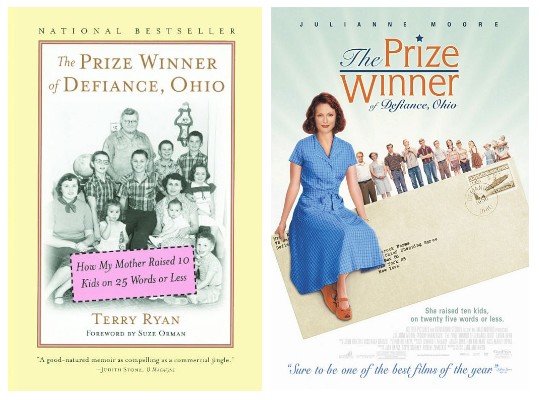
The book cover from 2001 (left) and the movie poster from 2005 (right)
“It’s easy to forget how long companies have been inviting ideas from ‘the crowd,’” says Julia Kirby in her HBR article Creative That Cracks the Code the Code. “If you’re in doubt, read The Prize Winner of Defiance, Ohio, a memoir of 1950s America in which the author’s mother writes advertising jingles for contest after contest.” This excerpt caught my interest, and I rushed to Amazon to buy the book (2001) and the movie (2005). I’ve just finished both and learned an awful lot advertising contests in the 1950s and 1960s, decades of prosperity in which companies fueled consumption and promoted the American Way of Life with creative contests.
Long before the term crowdsourcing or even the Internet existed, Pillsbury was running the Bakeoff to engage consumers in the brand, generate public awareness, and identify creative uses of their products (Parvanta, Roth & Keller, 2013)
In our Crowdsourcing 101 article, my colleagues and I cite the example Pillsbury’s Bake-Off cooking contest, first run by Pillsbury Company in 1949. But The Prize Winner of Defiance, Ohio features a whole lot of other examples: Chevrolet, Colgate, Dr Pepper, Heinz, Kleenex, Lipton, Lucky Strike, Purina… a variety of companies and brands ran advertising contests in the so-called Contest Era. Some of these contests were naming contests, others were idea contest and others were jingle contests, where consumers were asked to send in rhymes or slogans of a limited number of words.
I put a couple of examples from the book in the following presentation:
–
The 1950s were years of prosperity in the United States: the economy grew by 37%, and at the end of the decade, the median American family had 30% more purchasing power than at the beginning of the decade. During two decades, the American Way of Life was a symbol of freedom and happiness, expressed by abundance and massive consumption. One string to the advertising bow was the organization of contests, that were being advertised contests in newspapers and magazines.
Companies sponsored contests for two reasons: to acquire new advertising ideas from the public, and to sell more products (page 22 of the book)
Chevrolet, Colgate, Dial, Dole, Dr Pepper, Heinz, Kleenex, Kraft Foods, Lipton, Lucky Strike, Purina, Quaker Oats… All these brands are cited in the book, organizing a variety of contests in which Evelyn Ryan participated, and sometimes won. To participate, contestants had to send in a proof of purchase along with their entry, proving that they purchased the product. To find out more about these advertising contests, please read my 7 Facts about Advertising Contests in the Mad Men Era post on eYeka’s blog:
- Contests Were Big in the 1950′s & 1960′s
- Advertising Contests Were Creative Contests
- Brands Sponsored Contests to Sell More Products
- Prizes Went From Symbolic Earnings to Spectacular
- Advertising Contests Were Handled by Agencies
- Consumers Participated to Express Their Creativity
- The Contest Era Ended Because of Sweepstakes
Gently, affectionately and with wit, this lovely movie gives the 1950’s its due, but not for a moment does it go overboard and make you want to go back there (Stephen Holden, NY Times)
–
I hope you’ll find as much value in this memoir than I did. When you conduct research about creative crowdsourcing, it is very refreshing to take such a step back and realize for how long companies have been inviting ideas from the crowd. Do you have other similar examples? Have you heard of stories of testimonials of contest participants? Meanwhile, I invite you to find out more about crowdsourcing on my research page, or in the following blog post:
These 7 facts about advertising contests in the « Mad Men » era show that the principle of organizing creative contests is not new in marketing. Today, the phenomenon has just been taken to a whole new level with the possibilities offered by social media and crowdsourcing platforms like eYeka. With the use of online co-creation booming in the last decade, we can safely say that we are in a new golden era for creative advertising contests and that brands will continue to leverage crowds in new ways not possible during the Mad Men Era.